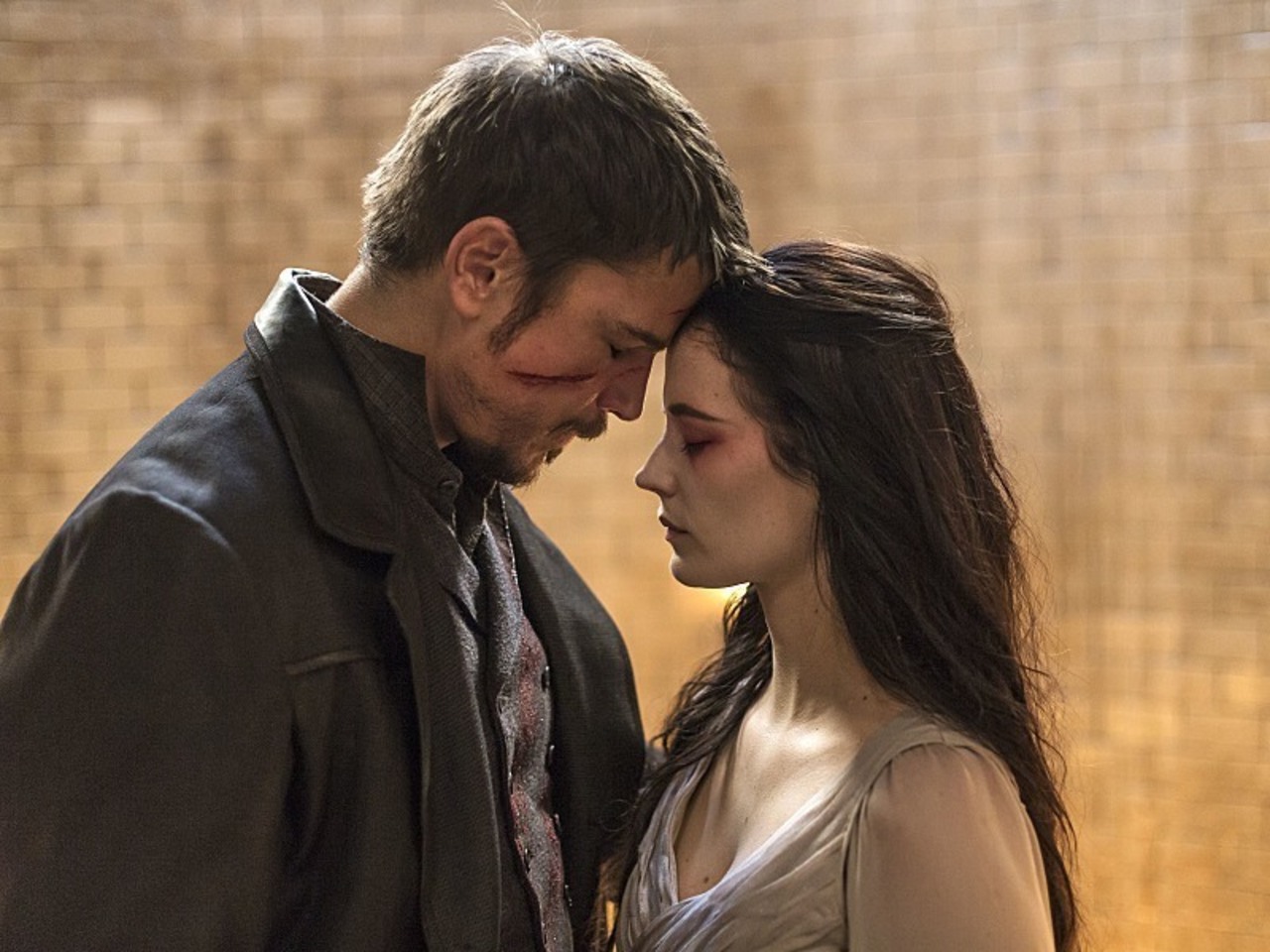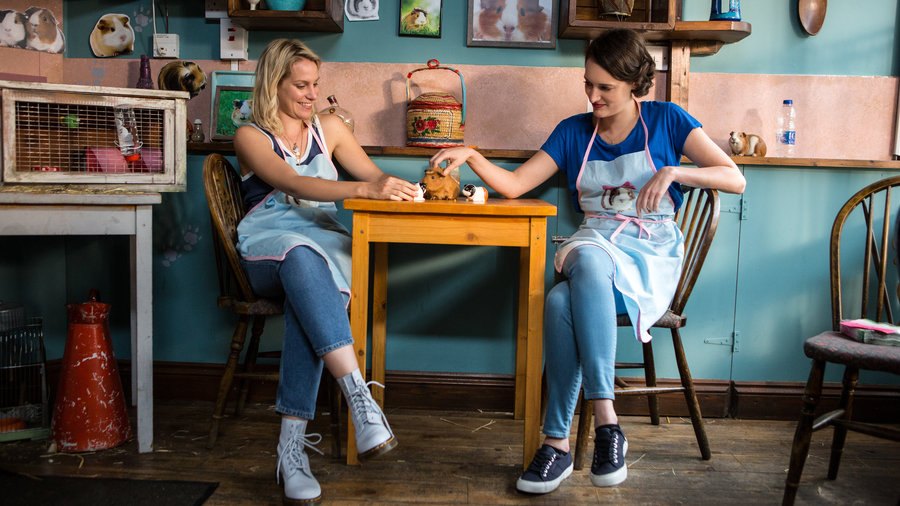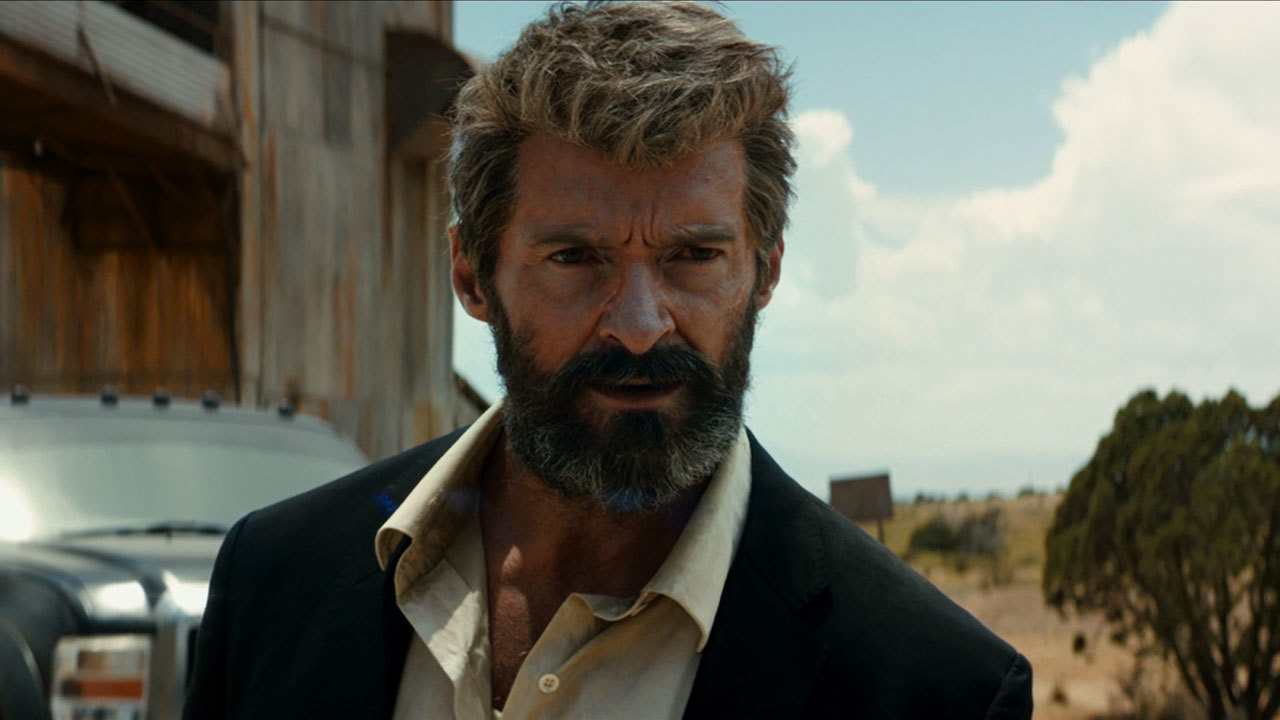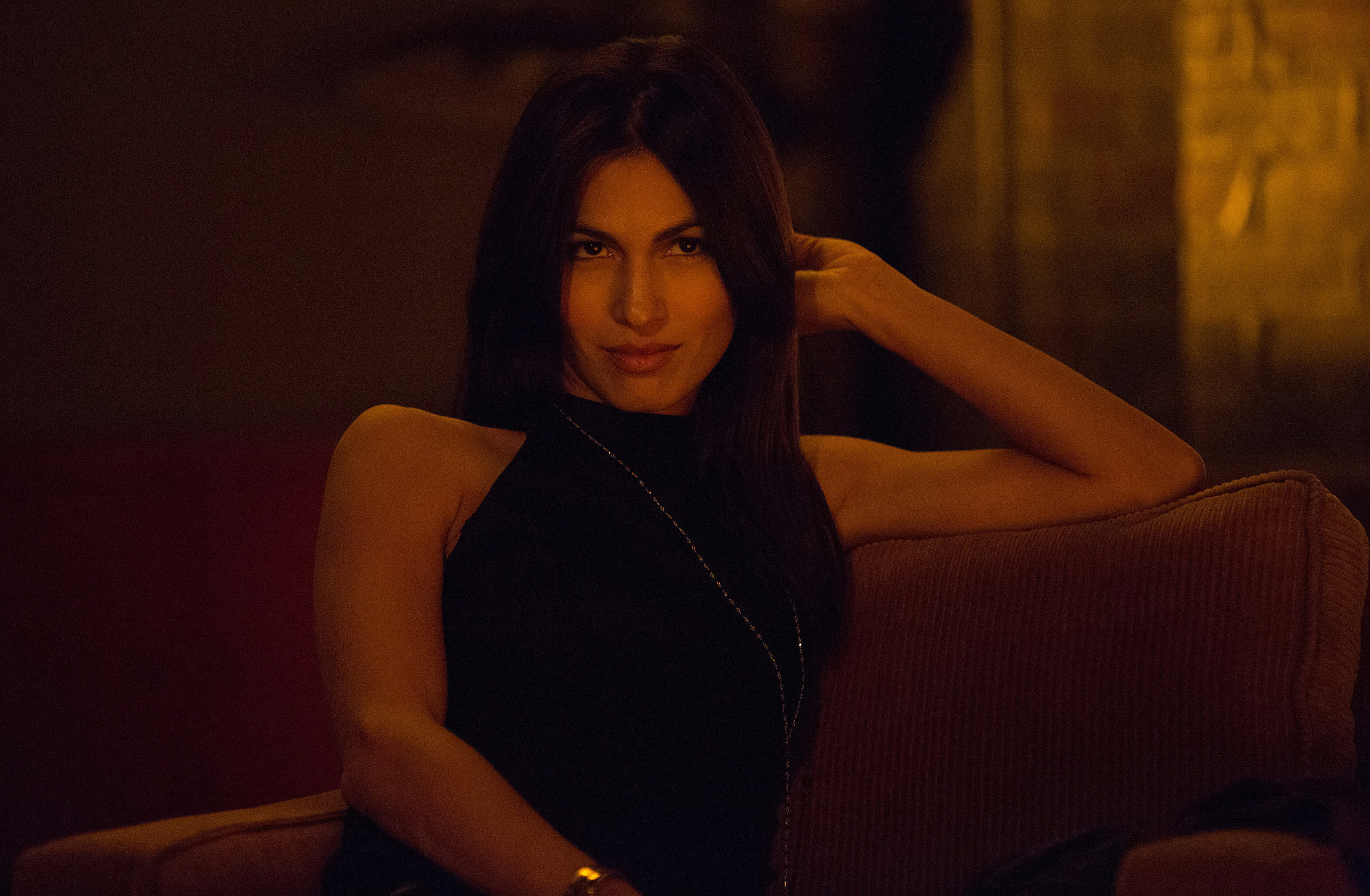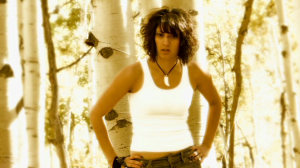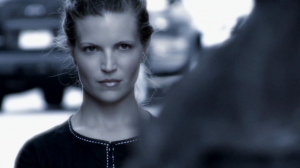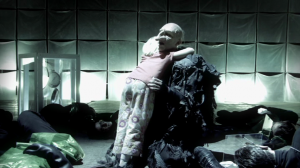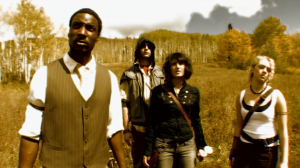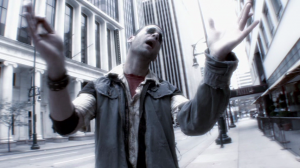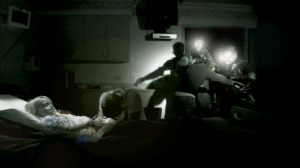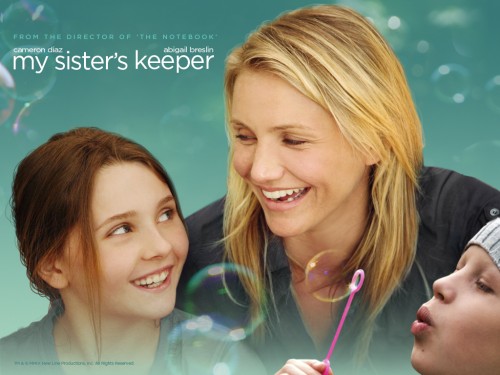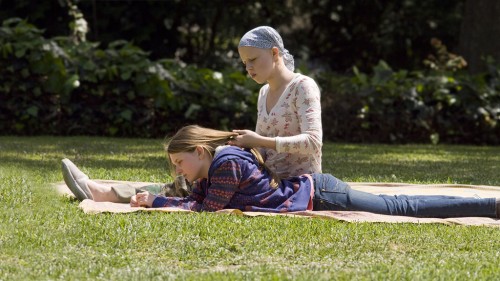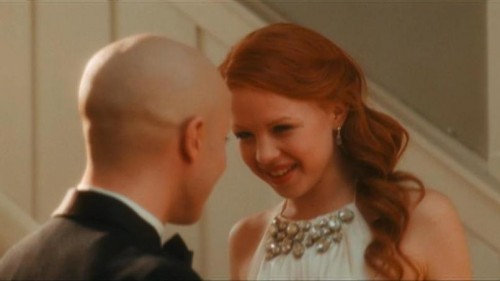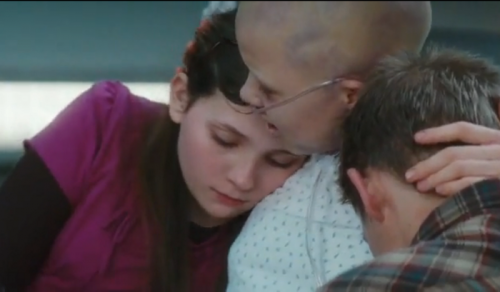This guest post is written by Cassandra A. Clarke. | Spoilers ahead.
In battles, there’s an importance not just on the victor but on the amount of effort given by both sides. Perhaps this is why it’s the longest boxing matches that we remember, not for the score, but for the sake of the perseverance in those who step into the ring; that’s what we remember. It is no wonder that Penny Dreadful’s season three finale (and unexpected series finale) left viewers with a bitter aftertaste in their mouth.
“The Blessed Dark” episode was framed as the show’s last battle (including an epic slow motion shot of the team assembling on their way to face Dracula in his Gothic hideout in the dregs of the city), one that viewers had been waiting for since the series’ introduction of Vanessa Ives (Eva Green), as the doomed to be cleverest person in the room, facing an eternal battle against the Devil and Dracula, both vying for her soul and flesh. Yet, we received a forfeit: a bequest to finish with all of the battle, with all of the effort, in exchange for calm; or, in more literal terms, she asks Ethan Chandler (Josh Hartnett) to kill her in order for her to find redemption in heaven and leave this earth. Vanessa, the same woman who punched the Devil in the face, who fought for her soul back, relinquishes her life.
In an interview with Variety, Penny Dreadful creator/showrunner John Logan and Showtime president David Nevins, claimed that this ending for Vanessa was actually a message of empowerment for the audience. In Logan’s words, he said Vanessa Ives “owns her death.” While it’s true that Vanessa did ask for her death, the two are missing a bigger point about the show’s view of agency. The series does a marvelous job at toying with the idea of possession to make us question the view of agency for the characters: Are they acting like themselves or another? Are we imagining them to be better than they are? In Vanessa’s last moment, it’s unclear whether or not her agency is fully there or not as moments before she is shot, she tells Ethan, “Vanessa is long gone.” This begs the audience to wonder whether or not her death was something she truly wanted or the desire of her darker parts inside herself and we received no answer. The moment is too brief to provide more clues to her state of mind and wishes; it ends with someone taking her life in their hands and ending it in order to prevent her from having to be hurt (or have others hurt) to survive.
Even if Penny Dreadful is saying that this death, this kind of redemption from her life, is what she sought after, there is still another question that goes unanswered: Why did Vanessa’s death come so easily? In the finale, we see no battle with Vanessa, no decision to harm the creatures that have harmed her. Although she has leveled up to be the Queen of Darkness, we do not see her actually wield her power nor use it to take advantage of Dracula. We are led to believe that she is seduced by him and not of herself, and yet, we see her escape the clutches of this darkness to ask Ethan for help? All of her battle happens under the surface and off-screen, so that we as a audience cannot actually see any of Vanessa’s planning or will or desire, and that is where her death failed us. We do not see the warrior that we have come to know and love, for her ability to not just fight battles, but to align others to fight against their darkest selves and moments for a better world. She has no team to lead, no mission to complete.
The team exists, but we do not see Vanessa lead them like she has in the past to help defeat witches, demons, and toxic people. Her team is almost completely destroyed by the hands of the creatures of the night and they have no real power in which to defeat Dracula without her assistance. Instead of her power, we see a docile, white-dressed maiden, asking to be sent back to her creator. This feels so wrong because the series tended to show us how sometimes the darkest parts of ourselves can be aligned with good intentions and used for something more. We see that motif exercised plentifully through Ethan, who is able to kill an entire bar of people and yet is still shown to struggle emotionally, returning to London for the good fight. Yet, we do not get a chance to really see Vanessa struggle in and through her darkness. And this also begs another uncomfortable question to ask that the show avoids of her darkness: Did she do enough to win back her God’s faith? Because we don’t see her fight and do see Dracula flee back into the night, we’re left wondering if she earned her redemption. Did she do enough good?
The series carefully avoids answering that question by putting us into a hazy London where we can only imagine the thousands of deaths that Vanessa caused. We do not see her confront that. We see her choose to join Dracula and then hear of her casualties but we do not see Vanessa reconcile these consequences. We do not see her team assemble to do everything they can for her. Instead, we are left with an ending of her friends gathering at her grave, talking about what they learned from her. They are all given a second life to live, post-Vanessa, and she has taught them how to be more wicked than good. Her death becomes a part of their story and creates an allegory of her character; she is not a woman anymore, but a figure to them, something they now own.
Although Logan says this is a “shocking” ending for a show in 2016, as it shows a woman dying for what she believes in, it is not at all shocking to me. Plenty of women characters have been used as a prop to tell other men’s stories, to be their emblem of hope and fear. Penny Dreadful perpetuates the idea that in order to be strong and overcome the life that you were born into, even if it’s unfair, even if it’s theoretically doomed to cause you pain over and over again, it’s more worthy and noble to sacrifice yourself for others as opposed to learning how to channel your efforts into creating a stronger world. Each of the male characters who create monsters literally and kill innocents (including their children and siblings) are able to gain a chance at a new life, but Vanessa was never granted this option.
Logan argues that the only two choices that Vanessa had were eternal Hell on earth or Heaven. I think that is where the show ultimately failed Vanessa and us, because there was no thought to a third alternative for her, to a last battle, or, dare I say, the vanquishing of both evil male-oriented forces in her life. Could we imagine in 2016 a woman who was able to defeat the evils and traumas that plagued her and while changed, becomes stronger? Could we even further imagine a world in which she is not quite all innocent and certainly not eternally good, but a force to be reckoned with and one that could be called upon for future battles of good and evil, thereby earning redemption?
I imagine the Penny Dreadful showrunners heckling, “But you can’t defeat evil!” Yes, Vanessa living through her darkness would be hard. And the forces that seek to control her will always be there, but that’s where her will gets to come in and thrive. Vanessa is the kind of woman who believes that while fighting is harder than succumbing to temptation, it is the more interesting choice to court the impossible for the sake of friendship. If Penny Dreadful aims to thematically tackle oppressive forces, why use her freedom of choice to leave the story? If the show is willing to reanimate a corpse to fight the patriarchy, it could have let Vanessa live to rebuild herself. Yes, oppression will always persist, but that is why her life’s work as an ally to and against evil would offer more power for her and others.
See also at Bitch Flicks:
A Feminist Guide to Horror: Torture Porn TV
Cassandra A. Clarke’s work’s been previously published in Electric Literature, Word Riot, Entropy, and other speculative places. She has an MFA in Fiction from Emerson College and is the Editor in Chief of the new-weird literary magazine, Spectator & Spooks.
